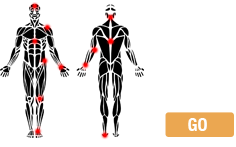Osteopathy for babies and children
Newborn check
An osteopathic newborn check-up offers an opportunity to bring your new baby into the practice as soon as you feel able, for an examination, and gentle cranial treatment. By releasing any strains from pregnancy and birth early on, we can help to reduce the chances of your baby becoming unsettled and optimize development.
Sometimes, a single treatment will be enough to do this, and we will not recommend further treatment.
If it seems that your baby would benefit from more treatment, we will clearly explain our findings and some of the possible signs and symptoms you should look for as your newborn grows and develops. A newborn is so malleable it is a real please to release any strains realize the impact we are having on a new life. It is so very rewarding.
The sooner an osteopath is able to diagnose and treat your baby, the easier it is for the balance within the child to be restored.
A structured primitive reflex test can be completed by our physiotherapist at the parents’ request. This is a scientific way of picking up and subtleties of slowed development as early as possible. This allows early intervention and improved outcomes.
Babies
The baby’s head has the remarkable ability to absorb the stresses of normal labour. (This is the only way a babies head is able to exit a mother’s pelvis; Both the head and pelvis must be as malleable as possible to perfectly fit one another allowing successful vaginal birth to occur. However, many babies are born with or develop oddly shaped heads and bruising. This normally recedes in the first few days, as the baby cries, sucks and yawns, but sometimes the un-moulding process is incomplete. As a result, the baby may have to live with the discomfort within its head and body and neighbouring structures (in this case the brain). Forceps and suction can also cause cranial trauma and stiffness.
Crying, irritable baby
Symptoms:
- a baby who needs to be rocked to sleep.
- prefers being carried
- may suck more for comfort.
Reason: The baby may be uncomfortable due to retained molding and a subsequent feeling of pressure in the head. Needs to be constantly moved/rocked to settle. Sometimes this can be an upset tummy from irritation or the vagus nerve (the nerve to the digestive system) at the exit from the skull. On rare occasion, dural tension can compromise abdominal function.
Feeding difficulties
Symptoms:
- Baby takes a long time to feed,
- fidgety feeder,
- one feed may merge into the next,
- clicking noises whilst feeding.
- If breastfeeding, the mother may have sore nipples.
Reason: Feeding is difficult and tiring due to mechanical stresses through the head, face, and throat. Nerves to the tongue may be irritated as they exit the skull, which makes sucking difficult. The tension in the jaw or tongue or neck can create restrictions of movement needed for latching, sucking and breathing during breastfeeding.
Digestive problems
Symptoms:
- Regurgitation of milk.
- Prolonged crying due to trapped, painful wind, often worse in the evening.
- May curl up or go rigid, constantly moving arms and legs.
- Baby prefers to be upright and carried.
Reason: Nerves to the stomach and diaphragm is irritated as it exits the skull or neck, and this can affect digestion. The diaphragm massages the gut during breathing (see video) and also acts as a sphincter to prevent regurgitation. If the diaphragm is not functioning properly or if this is tight or its nerve affected, movement through the stomach and bowel may be impaired causing pain and irritability.
Inability to relax
Symptoms:
- Baby sleeps for short periods – catnaps.
- Maybe a very light sleeper.
Reason: The tension on the bony and membranous casing of the skull keeps the baby’s nervous system in a persistently alert state. As a child grows, the effects of reduced cranial mobility can lead to other problems. The child may begin to bite himself, toys or others or start head-banging. It can also affect the body’s reserves and depletes the immune system, leaving the child more open to infections.
Ears and sinuses
Symptoms:
- impaired hearing
- facial congestion
- subsequent delay in speech development,
- blocked runny nose and mouth breathers.
Reason: Retained molding may affect the movements of the bones, in particular, the temporal bone where the eustachian tube resides or around the face reducing drainage of the ear canal and sinuses. Moist, dark environments lead to bacterial growth and infections. This is why antibiotics work, but if the cranial movement is not resolved the bacteria grows back quickly and the child suffers from repeated ear infections.
Childhood aches and pains
Symptoms:
- Aches begin between the ages of 7 and 8.
- Growing pains.
- Vulnerability to sprains.
Reason: Retained molding of cranial (skull) bones may cause a focal area of pressure in the skull, as the bony joints form at the age of 7 – 8 years. Postural tensions in other areas of the body leave it vulnerable to strain and fatigue.
Treatment is generally an enjoyable experience; however, reactions to treatment are variable. There is usually a feeling of relaxation and babies often fall asleep. On a rare occasion, babies are unsettled by treatment. This is a temporary situation and is usually caused when the release of retained molding is incomplete. It is not always possible for all the compression to release in one session, especially if the symptoms have been severe. On average 4 – 6 treatments are sufficient but can vary depending on the severity of the problem.


